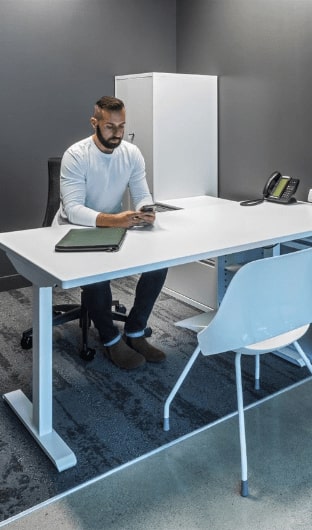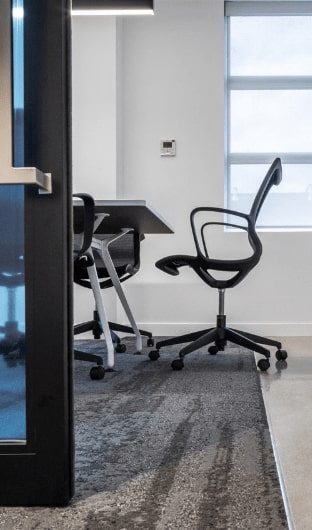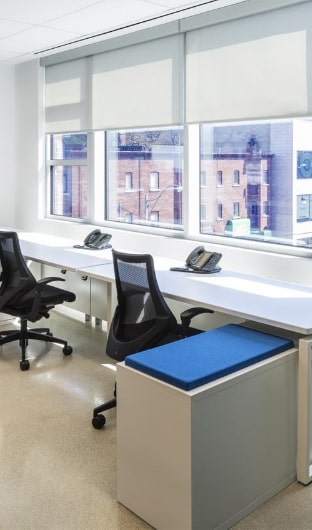
Designing Human-Centric Healthcare Spaces: A Guide To Achieving Patient-Centred Care
The healthcare industry is constantly evolving, with new technologies and treatments being developed every day. However, one aspect of healthcare that is often overlooked is the design of the physical spaces where healthcare is delivered. The design of healthcare spaces can have a significant impact on patient outcomes as well as the overall patient experience. In this article, we will explore the importance of designing human-centric healthcare spaces and provide a guide to achieving patient-centred care.
What Is Human-Centric Design?
Human-centric design is an approach to design that focuses on the needs and experiences of people. In healthcare, this means designing spaces that prioritize the needs of patients, their families, and healthcare providers. Human-centric design takes into account the physical, emotional, and psychological needs of patients and seeks to create spaces that promote healing, comfort, and well-being.
Why Is Human-Centric Design Important In Healthcare?
Healthcare is a unique and challenging industry that requires a high degree of empathy, compassion, and sensitivity to the needs of patients. Designing healthcare spaces with a human-centric approach can help to create an environment that is conducive to healing and recovery. Moreover, human-centric design has been shown to improve patient outcomes, increase patient satisfaction, and reduce healthcare costs.
Reduces Stress And Anxiety
One of the key benefits of human-centric design is that it can help reduce stress and anxiety in patients. Healthcare spaces can be inherently stressful, with patients often experiencing fear and uncertainty about their health. By designing spaces that are calming, welcoming, and comfortable, healthcare providers can help alleviate some of this stress and create a more positive patient experience.
Improves Safety
Human-centric design can also improve safety in healthcare spaces. By designing spaces with the needs of patients and healthcare providers in mind, healthcare facilities can reduce the risk of injury and infection. For example, designing patient rooms with easy-to-clean surfaces and minimizing clutter can reduce the risk of infection. Similarly, designing spaces that are well-lit and free of obstacles can reduce the risk of falls and other accidents.
How To Achieve Human-Centric Design In Healthcare Spaces?
Achieving human-centric design in healthcare spaces requires a thoughtful and intentional approach. Here are some key considerations to keep in mind:
Involve Patients And Healthcare Providers
One of the best ways to ensure that healthcare spaces are human-centric is to involve patients and healthcare providers in the design process. This can include soliciting feedback on design concepts, conducting focus groups, and observing how patients and providers interact within the space. By involving stakeholders in the design process, healthcare facilities can ensure that the final product meets the needs of those who will be using it.
Prioritize Comfort And Well-Being
Comfort and well-being should be at the forefront of healthcare design. This can include designing spaces that are warm and welcoming, with comfortable seating and natural lighting. Healthcare facilities should also consider incorporating elements of nature, such as plants and water features to create a calming and soothing environment. Similarly, healthcare facilities should prioritize the privacy of patients, with private rooms, screens, and spaces for family members.
Embrace Technology
Technology can play an important role in human-centric healthcare design. For example, digital signage and wayfinding can help patients navigate healthcare facilities more easily, reducing stress and anxiety. Healthcare facilities can also leverage technology to create a more personalized patient experience, such as using electronic medical records to track patient preferences and needs.
Consider Sustainability
Sustainability is a key consideration in modern healthcare design. This includes designing spaces that are energy-efficient and environmentally friendly with features such as solar panels and rainwater harvesting. Healthcare facilities also need to prioritize the use of non-toxic materials and products, which can have a positive impact on patient health and well-being.
Healthcare furniture also plays a vital role in sustainability. When choosing healthcare furniture, the durability, maintenance, and cleanliness of the product should also be kept in mind to improve long-term usage and minimize landfill waste.
Create Flexible Design
Modern healthcare design is all about flexibility. It is imperative to keep in mind that when it comes to designing a dynamic environment such as healthcare spaces, one size doesn’t fit all. This means designing spaces that can be easily reconfigured to meet changing needs, such as the ability to convert patient rooms into ICU rooms if needed, or designing spaces that can be used for multiple purposes, such as a waiting area that can be used for group therapy sessions.
Designing human-centric healthcare spaces is a critical aspect of delivering patient-centred care. By prioritizing the needs and experiences of patients and healthcare providers, healthcare facilities can create environments that promote healing, comfort, and well-being. Achieving human-centric design requires a thoughtful and intentional approach, with a focus on comfort, sustainability, and flexibility. By embracing human-centric design principles, healthcare facilities can improve patient outcomes, increase patient satisfaction, and reduce healthcare costs.
Harkel Office is a leading healthcare furniture dealer in Ontario with over 4 decades of experience. Connect with our design experts to transform your healthcare facility in Ontario with our simplified process, attention to detail, and product knowledge.





